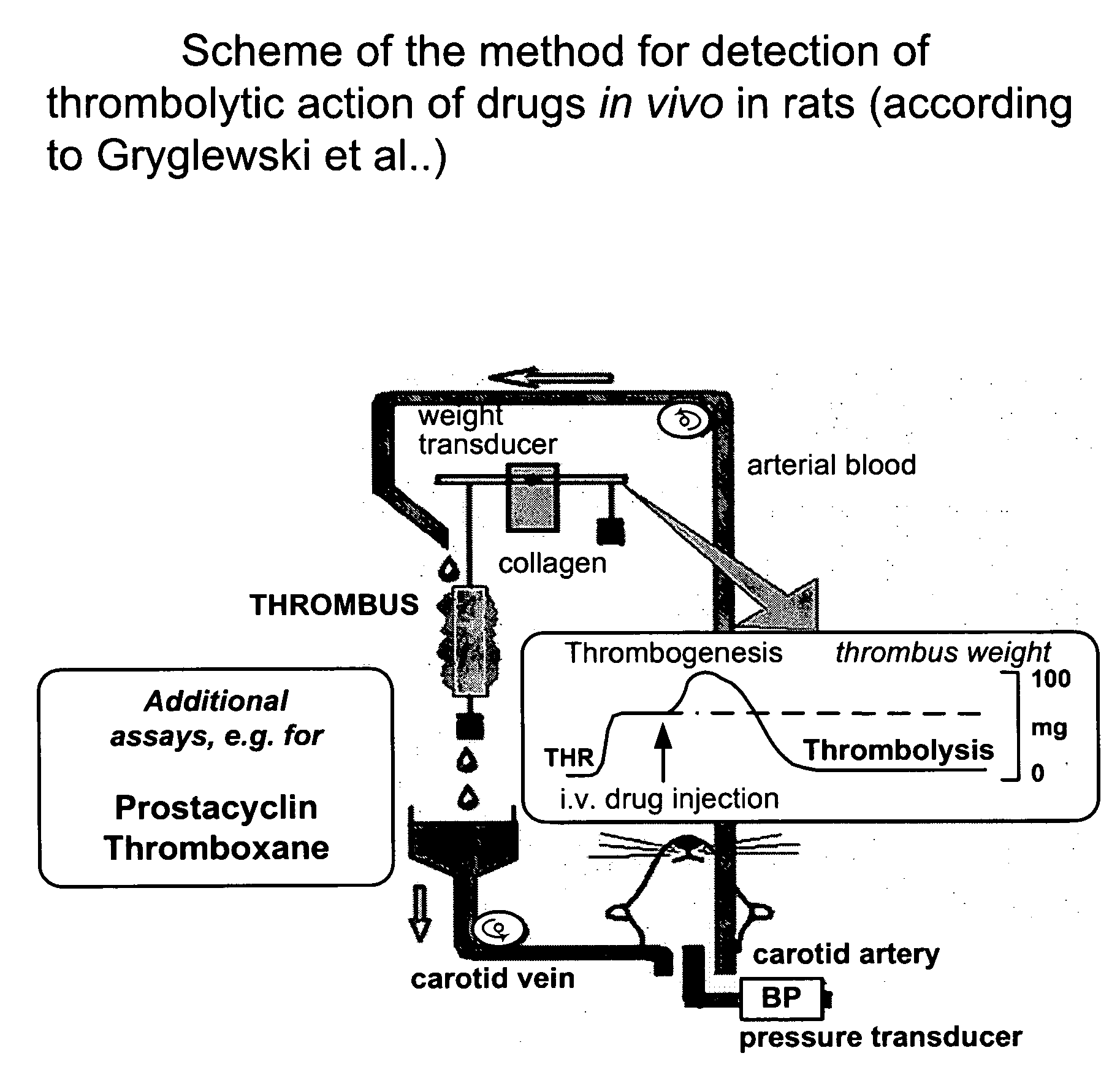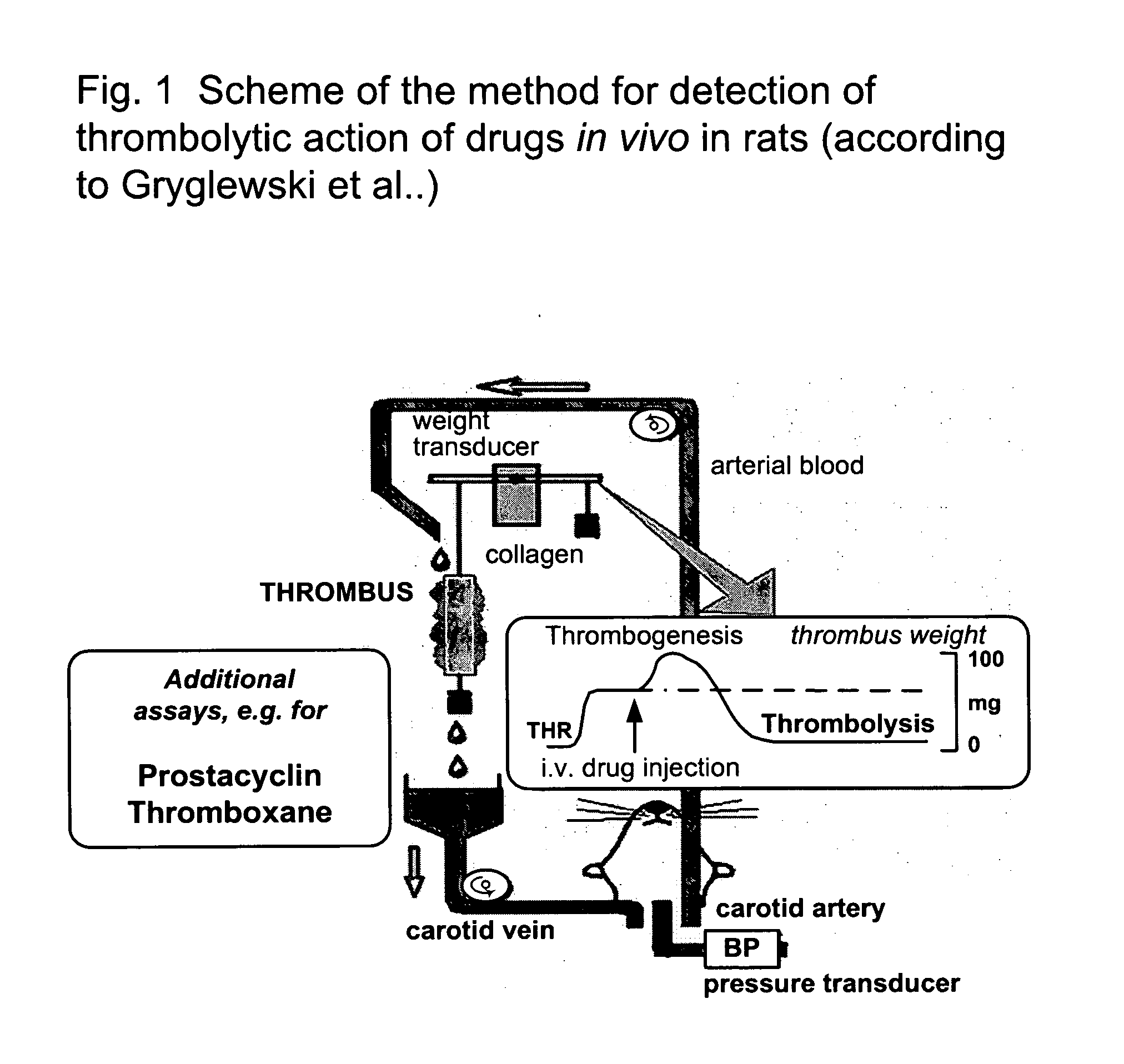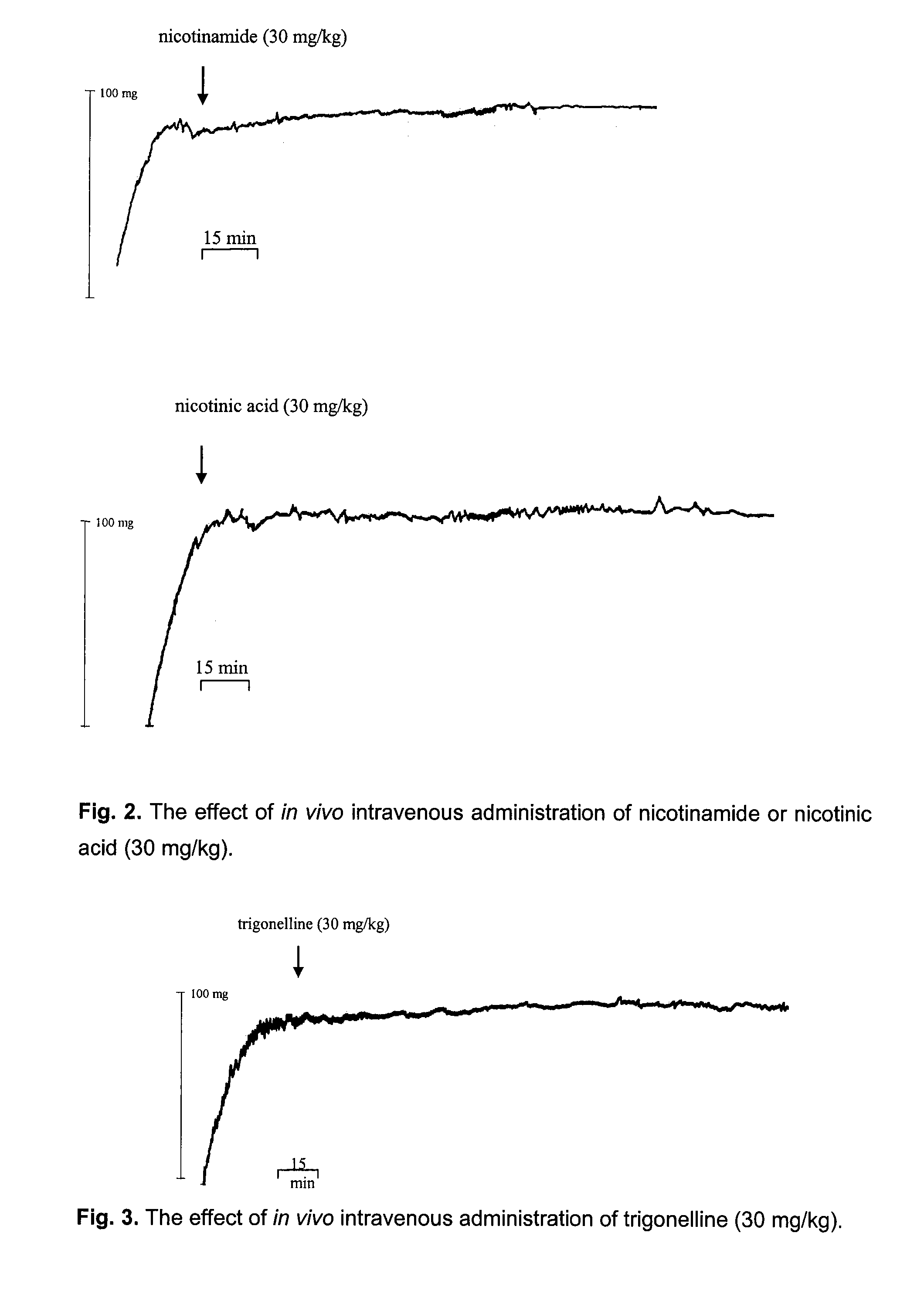Use of Quaternary Pyridinium Compounds for Vasoprotection and/or Hepatoprotection
a technology of quaternary pyridinium compounds and vasoprotection, which is applied in the direction of plant growth regulators, biocide, animal husbandry, etc., can solve the problems of excessive stimulation of tp receptors in endothelium and vascular smooth muscle cells
- Summary
- Abstract
- Description
- Claims
- Application Information
AI Technical Summary
Benefits of technology
Problems solved by technology
Method used
Image
Examples
example 1
[0057]The preparation of trigonelline thermolysate
[0058]Trigonelline thermolysate was prepared by thermal degradation (pyrolysis) of trigonelline at 220° C. for 30 minutes. Trigonelline (in a form of a thin layer of crystals) was pyrolysed in a thin-wall glass ampoule filled with argon.
[0059]The resulting mixture of the pyrolysis products was dissolved in water, the solution was filtered and extracted with chloroform. Water was distilled off using rotary evaporator and the residue was dried over phosphorus pentoxide.
[0060]Preliminary analysis of the pyrolysis products (thermolysate) by means of the mass spectrometry technique ToF-SIMS (Time of Flight Secondary Ion Mass Spectrometry) is presented below.
TABLE 1SIMS analysis - composition of trigonelline thermolysate; identifiedcompoundsProductStructurem / ePeak intensityC5H5N799265C5H5NH803305C5H5NCH394480657CH3(C5H4NCH310814580CH3CH3(C5H3)NCH31223472COOH(C5H4NCH313887964CH3COOH(C5H3)NCH315225725CH3Npyr-pyrN17131922CH3Npyr-pyrNCH3186220...
example 2
Binding of Pyridinium Cations to Immobilized Heparin as an Indicator of Thrombolytic Responce
[0062]Research conducted by the inventors indicated a strong correlation of the binding of compounds of interest to heparin which could be related to the presence of the positively charged pyridinium cation in their structure, and the thrombolytic activity of the compounds. Neither binding nor thrombolytic activity were observed for uncharged pyridine derivatives, like for example other nicotinamide metabolites.
[0063]The presence of the heparin in the pyridinium salt solution changes the absorption spectrum of the salt through the non-specific electrostatic interactions of pyridinium cations with negatively charged heparin moieties. The use of water-insoluble sepharose-immobilized heparin which binds some fraction of pyridinium cations causes the decrease of the concentration of the salt in the solution. It should be emphasized that sepharose immobilizing agent does not bind with pyridinium ...
example 3
[0071]The measurement of thrombolytic effects of trigonelline thermolysate
[0072]Thrombolytic activity was assayed by the method developed originally by Gryglewski et al., (Gryglewski R J, Korbut R, Ocetkiewicz A, Stachura J. In vivo method for quantitation for anti-platelet potency of drugs. Naunyn Schmiedebergs Arch Pharmacol 1978;302:25-30; Gryglewski R J 1978, Gryglewski et al., 2001). The scheme of the method is shown on FIG. 1.
[0073]Wistar rats (body weight of 300-350 g) were anaesthetised (thiopental 95 mg / kg i.p) and heparinised (800 U / kg i.v.). Caniules were placed in arteries and connected from the left carotid artery vein with a pressure sensor and from the right carotid artery through heated (37° C.) line to peristaltic pomp. The blood from carotid artery was pumped to the extracorporeal circulation were it superfused (1.5 ml / min) a 3 cm collagen strip excised from Achilles tendon hung on a spring-balanced auxotonic lever of a Harvard 386 isotonic transducer and the weigh...
PUM
| Property | Measurement | Unit |
|---|---|---|
| weight | aaaaa | aaaaa |
| resistance | aaaaa | aaaaa |
| oxidative stress | aaaaa | aaaaa |
Abstract
Description
Claims
Application Information
 Login to View More
Login to View More - R&D
- Intellectual Property
- Life Sciences
- Materials
- Tech Scout
- Unparalleled Data Quality
- Higher Quality Content
- 60% Fewer Hallucinations
Browse by: Latest US Patents, China's latest patents, Technical Efficacy Thesaurus, Application Domain, Technology Topic, Popular Technical Reports.
© 2025 PatSnap. All rights reserved.Legal|Privacy policy|Modern Slavery Act Transparency Statement|Sitemap|About US| Contact US: help@patsnap.com



